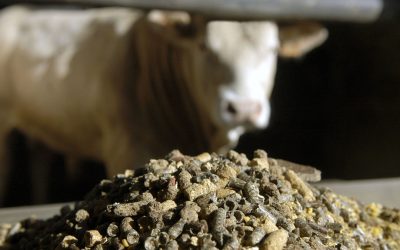Million-dollar farms in the new century

A new report from the Economic Research Service shows that small farms still represent the majority of farming in the US, but the number of million-dollar farms is increasing rapidly.
Small farms (those with annual sales less than $250,000) represent a large
majority of US farms (92%), but account for a relatively small share of total
farm production (23%).
The report from the Economic Research Service
(ERS) of the USDA examines the other end of the size spectrum, where a large
percentage of farm production occurs, specifically on “million-dollar farms”
whose annual sales total $1 million or more.
The 35,100 million-dollar
farms reported in 2006—2% of all US farms—accounted for 48% of the sales of US
agricultural products.
Shift in farm sales distribution
Major
shifts occurred in the distribution of gross farm sales between the 1982 and
2002 Censuses of Agriculture, with sales measured in constant 2002 dollars.
Farms with sales of $1 million or more doubled their share of total US
farm sales from 23% in 1982 to 48% in 2002. Some of these million-dollar farms
are relatively recent entrants to farming, while others existed as far back as
1978. The shift in production to million-dollar farms is likely to continue.
Average operating profit margins increase with sales, reflecting economies of
size in farming.
As a result, million-dollar farms—and farms growing to
that size—have a competitive advantage relative to smaller farms. The shift in
production may eventually slow, however, once million-dollar farms’ shares of
the commodities most amenable to large-scale production reach their upper
limits.
No market power
Million-dollar farms do not have market
power. The shift in farm production to million-dollar farms reflects a long-term
concentration of farm production on fewer farms that has been underway since the
beginning of the 20th century.
However, there are still too many
million-dollar farms—just over 35,000—for any single farm to dominate
agriculture or the production of specific commodities.
Small share in
subsidies
Million-dollar farms receive a small share of Government
payments. Most Government payments are commodity-related or targeted at current
or past production of specific commodities, largely feed and food grains,
cotton, and oilseeds. Relatively few million-dollar farms—particularly those
with sales of $5 million or more—specialize in crops covered by commodity
programs.
As a result, million-dollar farms received only 16% of US
Government payments in 2006, a small share compared with their 48% share of
gross sales, although disproportionately large compared with their 2% share of
all farms.
Implications drawn
Three significant implications
regarding million-dollar farms can be drawn from the information
presented:
1. The shift in production to million-dollar farms is likely
to continue. As long as the operating profit margin is proportional to sales
class, million-dollar farms will have a competitive advantage. The shift in
production may eventually slow, however, once million-dollar farms’ shares of
the commodities most amenable to large-scale production reach their upper
limits.
2. There are still a sufficient number of million-dollar farms to
prevent individual farms’ domination agriculture or individual commodities.
Concentration of production, however, may be a more significant concern when the
owners of commodities—which include production contractors—are considered,
rather than just the farms producing them.
3. Most million-dollar farms are
family operations, although the operator and spouse supply only a small fraction
of the labour. Direct ownership of million-dollar farms by non-farm corporations
is infrequent, but such corporations are frequently involved with million-dollar
farms through contracting.
The full report can be downloaded from the
ERS website.











